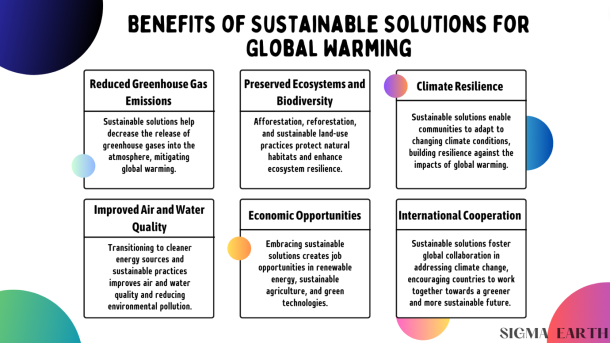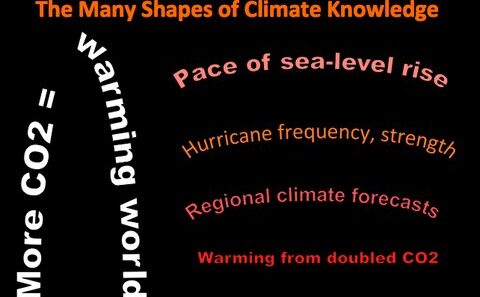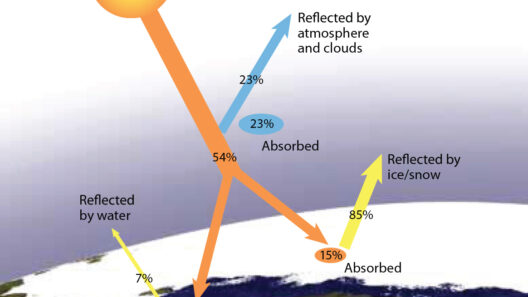Global warming represents one of the most profound challenges of our time, instigating widespread ecological disruptions and societal repercussions. The observable increase in global temperatures, glacial melt, rising sea levels, and extreme weather phenomena is not merely coincidental, but a direct consequence of anthropogenic activities. As we contemplate the multitude of ways to address this impending crisis, understanding sustainable solutions becomes imperative. This discourse will delve into actionable strategies that can be employed to combat the deleterious effects of global warming and secure a sustainable future.
First, transitioning to renewable energy sources is a cornerstone of combating global warming. The utilization of fossil fuels has propelled our economies but also engendered significant carbon emissions. The advent of technology in solar, wind, geothermal, and hydroelectric power generation offers an alternative that is both sustainable and economically viable. Solar panels, for instance, are becoming increasingly efficient and affordable, thereby allowing households and businesses to harness the sun’s power. Wind energy farms, also gaining traction, have demonstrated how vast stretches of land can be repurposed to generate clean energy. Investing in these technologies not only curtails greenhouse gas emissions but also stimulates job creation in the green energy sector.
Moreover, enhancing energy efficiency in our homes and industries is crucial. This can be achieved through the adoption of energy-efficient appliances, better insulation, and smart home technology. Implementing stringent building codes and standards ensures that new structures are designed with energy conservation in mind. Industries can also play a significant role by reengineering processes to minimize energy use while maximizing output. This not only contributes to a reduction in carbon footprints but also leads to cost savings in the long run.
Another vital approach is the promotion of sustainable transportation. The transportation sector is a significant contributor to greenhouse gas emissions; hence, initiatives that encourage the use of public transport, cycling, and walking must be prioritized. Electric vehicles (EVs) represent a significant advancement in this domain. As battery technologies improve and charging infrastructure expands, the adoption of EVs is becoming more feasible. Incentivizing public transport usage, such as providing subsidies or improving service coverage, further alleviates the reliance on personal vehicles. Ultimately, reshaping our transportation paradigm not only lessens emissions but fosters healthier urban environments.
Equally important is the focus on sustainable agriculture. Conventional farming practices are often detrimental to the environment, utilizing pesticides and fertilizers that deplete soil health and release carbon into the atmosphere. Sustainable practices such as organic farming, crop rotation, and agroforestry enhance biodiversity, improve soil fertility, and sequester carbon. By promoting local food systems and reducing food waste, we mitigate the emissions associated with food production and transportation. Furthermore, educating consumers about the benefits of plant-based diets can also substantially decrease the carbon footprint of our food choices.
Reforestation and afforestation play a pivotal role in mitigating climate change impacts. Forests act as vital carbon sinks, absorbing CO2 from the atmosphere. Initiatives aimed at restoring degraded land through tree planting not only sequester carbon but also enhance biodiversity and improve air quality. Conservation of existing forests and ecosystems must also be prioritized to preserve their natural capacity for carbon storage. Engaging communities in these efforts enhances environmental stewardship and instills a sense of responsibility towards nature.
In addition to these strategies, it is vital to implement sound waste management practices. Waste decomposition in landfills produces methane, a potent greenhouse gas. By adopting zero-waste initiatives and encouraging recycling, composting, and responsible consumption, we can significantly reduce emissions associated with waste disposal. Policy reforms that mandate reduced plastic use and incentivize recycling can create a circular economy, where materials are reused rather than discarded. This approach not only curtails emissions but also conserves resources, leading to a more sustainable model of consumption.
Public policy plays an instrumental role in combatting global warming. Legislative measures that adhere to scientific recommendations for carbon reduction are paramount. Carbon pricing, cap-and-trade systems, and renewable energy mandates compel industries and consumers to consider the environmental impact of their choices. Collaborative efforts at local, national, and international levels yield significant advancements. Multilateral agreements like the Paris Agreement galvanize countries to commit to emission reduction targets, fostering a global coalition against climate change.
Education and awareness are also crucial components. A well-informed public is more likely to advocate for sustainable practices and policies. Integrating climate education into school curricula fosters a generation that prioritizes environmental health. Awareness campaigns can mobilize communities to take action, whether through grassroots organizations advocating for sustainable policies or initiatives encouraging individual behavioral changes. The union of collective action can amplify the impact of individual efforts, creating an environment where sustainability becomes the norm rather than the exception.
In conclusion, combating the effects of global warming necessitates a multifaceted approach that encompasses various strategies. From renewable energy adoption to sustainable agriculture and effective waste management, each action contributes to the overarching goal of mitigating climate change. Engaging in advocacy, participating in reforestation efforts, and supporting policy reforms are pivotal in shaping a sustainable future. As the urgency of the climate crisis grows, our commitment to these solutions will determine our collective capacity to forge a livable planet for present and future generations. The time for action is now, and it is incumbent upon every individual, organization, and government to contribute to this endeavor.








